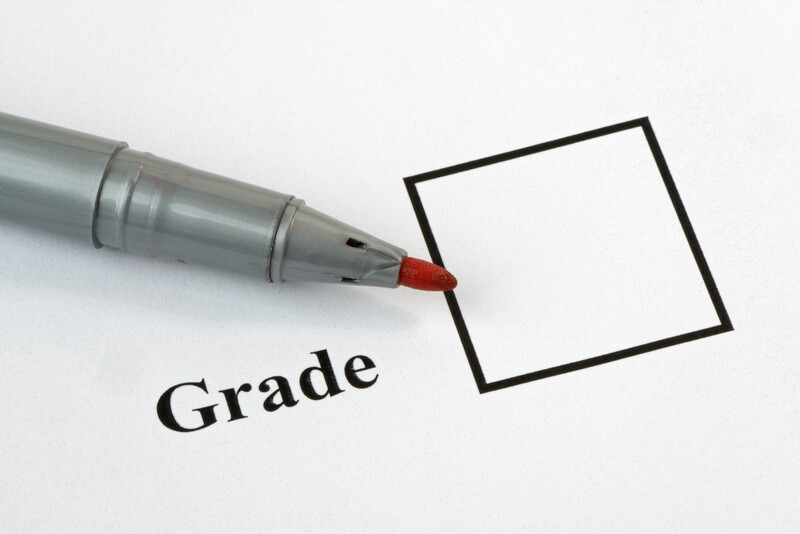September 1, 2020
•
5 min (est.)•
Vol. 78•
No. 1Eight Essential Principles for Improving Grading
Done well, grading can play a key role in a balanced district assessment system.
At the 2019 Learning Sciences International's National Formative Assessment Conference, the four of us participated in a panel session to explore the place of grading as an important component of comprehensive and balanced district assessment systems. After this panel discussion, we met to summarize our discussion and make recommendations for how grading might be improved to enhance student learning, supporting our points with research and our practical experiences. Here are some of our thoughts on needed improvements.
We define grades as the symbols assigned to individual pieces of student work or to composite measures of student performance created for report cards. Grades are usually letters, numbers, figures, or a set of descriptors that designate different levels of performance.
Discussions of grading touch on complex, occasionally emotional questions and bring out strikingly differing views on seemingly straightforward things like the role of evaluating student performance. It helps to clarify from the start one's view on some of these questions. Before we made recommendations for improving grading practices, we noted some things we could agree on.
First, we believe that the primary goal of grading and reporting is communication—that is, providing information to interested stakeholders about student achievement and often other qualities (such as dispositions) in such a way that interested parties can clearly understand it and use it.
Second, we acknowledge that, historically, grading practices have been notably variable. Teachers often use a mix of achievement-related information and other factors (like progress or attendance) to calculate and assign grades—both for individual assignments and report cards. Teachers even decide what factors to include—and how to weigh them—differently for different students. Many of the grading practices in U.S. schools are based on tradition, not evidence. There's a lot of room for improvement.
Third, in our discussion after our panel we talked about whether the usual methods of grading should be reformed or replaced with something completely different—and we come down for reform and improve. We considered two realities in debating this: (1) grading practices are at least partly rooted in teachers' foundational beliefs about learning and assessment, and (2) grading is related to significant institutional practices, such as admission into higher education institutions. Since we can't erase and replace teachers' beliefs and prior experiences or immediately alter institutional practices, we believe grading will have to be reformed, not changed in the twinkling of an eye.
Deep-rooted reform will help our grading systems fulfill their purpose. Done well, grading can become a useful source of information in a comprehensive and balanced district assessment system. Grades communicate information that summarizes larger learning domains—like unit goals or standards—than does lesson-by-lesson formative assessment. In addition, grades are more contextualized to school learning than standardized achievement tests; they report classroom achievement that's closer to the time, place, and manner in which the students learned. Effectively determined grades can help students, parents, teachers, and administrators understand what has been learned and select more appropriate next steps in teaching, planning, and resourcing.
To that end, we have identified eight principles we believe leaders should employ to improve grading practices so these practices are most effective in communicating student progress.
1. Clarify purpose. Educators, parents, and students should know the specific purpose of their grading and reporting system: what it will communicate, what it does not communicate, and what additional information is available. There is no perfect grading system. All systems involve some trade-offs involving specificity, recency, and precision of information. For example, some standards-based grading systems report only on selected "power standards," for the sake of having a concise, actionable report card. When this is the case, stakeholders should know it—and should know how and where they can get information about other standards if they desire. We've found that in most districts and schools, the primary purpose of grading is to communicate students' current status on the learning outcomes in curriculum and standards, but schools don't always spell out this purpose to all involved.
2. Establish goals. Clear learning goals unite curriculum, instruction, and assessment and are the basis of a sound grading system. A clear goal, for instance, might state "Use place value understanding to round multi-digit whole numbers to any place." When teachers are clear about learning goals, they can provide appropriate instruction and use assessments that enable valid inferences about student learning. When students are clear about goals, they're better able to regulate their own learning; they can set a goal and work toward it, monitoring their understandings and adjusting their work as they go. Assessments of student performance, and the associated grades that result, should be closely aligned to targeted goals.
Educators have asked us what we think about grading social-emotional learning as part of school learning goals for grading. We believe social-emotional learning goals should not be evaluated and graded in a traditional manner (such as an A–F scale), because SEL goals are hard to measure—and most measures of these skills are easily gamed. However, both teachers and students can collect evidence of SEL-type skills or dispositions. Students can reflect, self-assess, and set personal goals for improvement in specific areas. Teachers can give feedback on SEL goals as well, noting progress and giving suggestions for improvement.
3. Base grades on a collection of evidence. The quality of the evidence makes a great deal of difference. Each piece of evidence, whether student work on an assignment or teacher observation of what a student does or says, should support valid conclusions about whatever learning outcome or learning skill it's being used to rate, and should be interpreted accurately and without bias.
4. Reflect current achievement. Grades should be based on a synthesis of evidence reflecting students' current level of learning or accomplishment, not an average of performance over a period of time. Where students were at the beginning or halfway through a learning sequence doesn't matter. How many times they fell short during that sequence doesn't matter. What matters is what they have learned and are able to do currently or "at this time."
5. Use established criteria aligned to targeted learning goals. Ideally, districts would establish sets of evaluative criteria and associated scoring tools (like common rubrics) aligned with key standards. Having such well-developed evaluation tools would make it more likely that teacher judgments of student performance—and the concomitant grades assigned—will be more consistent with the judgments of other teachers. We acknowledge that this recommendation can be difficult to enact, because agreement on criteria and performance levels may be difficult to reach, but we think it is worth the effort.
6. Set conditions for opportunity to learn—including feedback. Students must be given appropriate opportunities to practice and receive feedback before their work is graded. Learning precedes assessing and reporting what has been learned. Students need opportunities to apply new learning and receive feedback before they're evaluated. Ongoing formative assessments can provide that feedback, and the results of such assessments should not be graded. The feedback students receive on ongoing work should be based on the same criteria as will be used for grading summative assessments. Effective feedback fuels the formative learning cycle, guides student self-regulation of learning, and helps students connect the practice and learning work they do with the grades they receive.
7. Report achievement separately. The main grades on a report card should report only students' current status on achieving intended learning outcomes, indicated by the quality of work on well-designed assessments, performances, or demonstrations. This body of work should represent with fidelity the domain of learning described by the standard. Other factors, like SEL skills, maybe, or work habits (completing homework on time, say), collaboration, behavior, and attendance should be reported in a separate section on the report card (sometimes called Learning Skills). We recommend reporting and rating such factors using a different scale from the achievement grades so the measurement areas won't be confused.
8. Use scales with fewer gradations. For report cards, we recommend scales with fewer categories (A, B, C, D, F, or ratings on proficiency-based rubrics) as opposed to more categories (like 0–100). Fewer is better because as the number of categories rises, inter-rater reliability goes down (meaning that different teachers looking at the same body of evidence are less likely to assign exactly the same grade). The trade-off is that when using fewer categories, it isn't always possible to report nuanced differences in performance. A leader might get around this by allowing for individual grades to differ during a marking period. For example, a teacher could report percentages correct on tests but report proficiency ratings along a learning progression for performance assessments, as long as she used a defensible method of aggregation for the marking-period grade.
Changing grading and reporting practices can be very challenging. The pace of reforms will vary from place to place. While we've offered recommendations to improve current grading practices, we can envision future approaches to grading and reporting that would depart more deeply from tradition. For example, grading against a continuum of proficiency ratings that range across grade levels (unlike the current standards we use, which are linked to students' grade levels) might provide a more universal gauge of performance and address grading issues for a wider range of learners. This would mean, for example, that a 2nd grader and a 4th grader with the same proficiency in narrative writing would receive the same proficiency rating for narrative writing. In addition, online "Learning Board" systems for collecting, displaying and assessing evidence of student work could describe student learning in more depth than do current report cards.
Grading should be a part of a comprehensive, balanced assessment system. These principles can help it be such. Grades should be based on clear learning outcomes and appropriate assessments of those outcomes and should support a reporting system that clearly summarizes student achievement.
There is urgency for reform: Poor grading practices at best don't support learning, and at worst, actually harm students by giving them inaccurate or inappropriate information on which to base important school and life decisions.
Copyright © 2020 Susan Brookhart, Thomas Guskey, Jay McTighe, and Dylan Wiliam
End Notes
•1 The white paper we prepared presenting our ideas for grading reform in more detail is available at https://www.dylanwiliamcenter.com/Grading-Policy-Paper.
•









